Common Hazardous Beach, Surf, & Ocean Conditions
Common
Hazardous
Beach, Surf, & Ocean
Conditions
". . . Warning, Warning, Danger, Danger!"
- Robot, "Lost In Space"
We especially want you to be aware of the following dangerous and hazardous conditions that exist at many of Hawaii's beaches:
On This Web Page You'll Find Information On:
- SHARP CORAL
- DANGEROUS SHORE BREAK
- HIGH SURF
- STRONG CURRENT
- WAVES ON LEDGE
- THEFTS AT THE BEACH
And, On Separate Web Pages, There's Information On The Following:
- DANGEROUS SEA CREATURES
- SHARKS!
- TOO MUCH SUN
(BTW, these warnings also apply to most other beach and ocean areas outside of Hawai`i!)

 SHARP CORAL: Most of Hawaii's beaches have sharp coral reefs close to the shoreline. Use caution when swimming in shallow reef areas. Should you be injured, see a lifeguard for minor first aid assistance. City and County of Honolulu lifeguards Quick tip: SHARP CORAL 
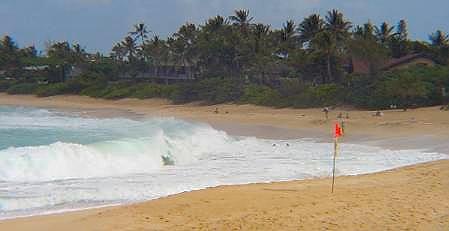 Small waves can be very dangerous, too! (Surfers' slang for small waves is "ankle busters.") Be sure to ask a lifeguard about the wave conditions at the beach you may be attending. Be especially careful when the surf's up and running fast! 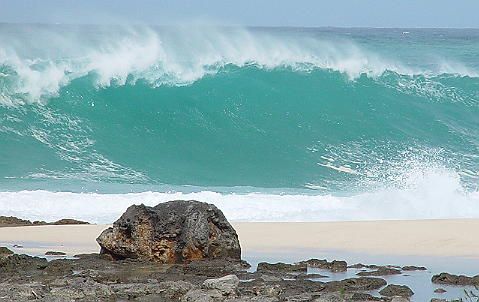 
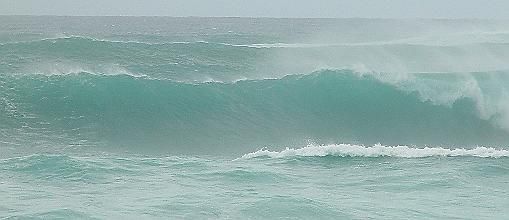 In summary, here's some big surf safety tips: 

|
 ![[HAMMERHEAD SHARK]](http://www.loststory.net/sites/default/files/nature_page/hhead.gif) And, just when you thought it was safe to read on . . . Visit our SHARK pages by clicking here. Click here for telephone numbers you can call to report a sighting of large (i.e., more than eight feet long), aggressive sharks in Hawai`i.
The aquarium is also just a great place to visit to see and learn about Hawai`i and the Pacific Basin's ocean environment, indigenous marine organisms, reefs and coral, seals, and efforts to save and protect them. Quick tip: SHARK SIGHTED |
 Watch Out For Two Legged Critters, Too! John Clark writes in his superb book The Beaches of O'ahu: " . . . A major problem at many of Oahu's beaches is thefts from cars. Many people especially tourists, lose thousands of dollars each year in cash, cameras, jewelry, and other personal items of value. "The Honolulu Police Department is well aware of this problem and details officers in casual clothes to assist the regular beat men in patrolling the particularly hard-hit areas. These protective efforts, however, do not deter the thieves in spite of the large number of arrests that are made each year. The business is much too lucrative. Any valuables that are not going to be personally carried should be left in the hotel or at home." |


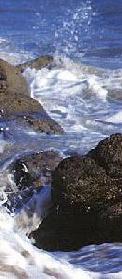
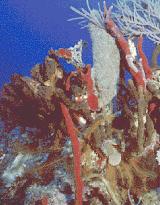 can radio or call for an emergency ground or helicopter emergency medical ambulance in very severe circumstances. Should coral become embedded deeply see your doctor as soon as possible to have it removed. Deep cuts should be attended to by a physician to avoid the risk of infection. If you're tide pooling or reef walking wear protective foot gear.
can radio or call for an emergency ground or helicopter emergency medical ambulance in very severe circumstances. Should coral become embedded deeply see your doctor as soon as possible to have it removed. Deep cuts should be attended to by a physician to avoid the risk of infection. If you're tide pooling or reef walking wear protective foot gear. 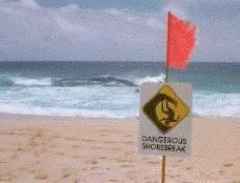
![[HIGH SURF]](http://www.loststory.net/sites/default/files/nature_page/hisurf.jpg)
![[HIGH SURF]](http://www.loststory.net/sites/default/files/nature_page/hisurf2.jpg) If you're uncertain of your abilities, don't go into the ocean during high surf; heed all posted high surf warnings! Your life could depend on it! Surf on the North shore may reach heights of twenty-five feet plus, - on the West shore, fifteen feet plus! These are averages - so remember, individual wave sets can get as big as fifty feet. Quick tip:
If you're uncertain of your abilities, don't go into the ocean during high surf; heed all posted high surf warnings! Your life could depend on it! Surf on the North shore may reach heights of twenty-five feet plus, - on the West shore, fifteen feet plus! These are averages - so remember, individual wave sets can get as big as fifty feet. Quick tip: ![[STRONG CURRENTS]](http://www.loststory.net/sites/default/files/nature_page/strocur.jpg)
 When caught in a strong current -- Try to keep a level head, i.e., don't panic! Wave one or both hands in the air, and scream or call for help. Swim diagonally to the current, not against it. Please heed all posted warnings! Your life could depend on it!
When caught in a strong current -- Try to keep a level head, i.e., don't panic! Wave one or both hands in the air, and scream or call for help. Swim diagonally to the current, not against it. Please heed all posted warnings! Your life could depend on it!![[WAVES ON LEDGE]](http://www.loststory.net/sites/default/files/nature_page/wavleg.jpg)
![[WAVES ON ROCKS]](http://www.loststory.net/sites/default/files/nature_page/waverock.jpg)
![[WAIKIKI AQUARIUM BUTTON]](http://www.loststory.net/sites/default/files/nature_page/wabutton.gif)
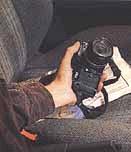 The thieves operating in the beach areas are very professional and can break into a locked car and car trunk, loot it, and be gone within a few minutes. Beach goers, especially tourists, should bring with them only what is necessary and should never leave anything of value in the car even if it is locked. Automobiles from car rental agencies are prime targets.
The thieves operating in the beach areas are very professional and can break into a locked car and car trunk, loot it, and be gone within a few minutes. Beach goers, especially tourists, should bring with them only what is necessary and should never leave anything of value in the car even if it is locked. Automobiles from car rental agencies are prime targets.